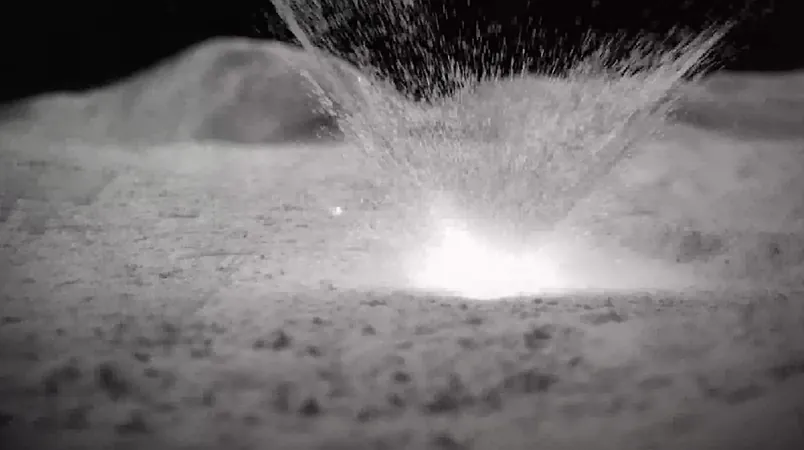
Revolutionary Discovery: Solar Wind Could Create Water on the Moon!
2025-04-16
Author: Charlotte
A Shocking Find: Water from the Sun?
For decades, scientists have speculated that the solar wind—a stream of charged particles from the Sun—could be responsible for producing water on the Moon. Now, researchers at NASA have taken a giant leap forward in confirming this remarkable theory.
A Game-Changing Laboratory Confirmation
In a groundbreaking lab simulation, scientists have demonstrated how the solar wind can trigger chemical reactions on the Moon’s dusty surface, potentially generating water. Published on March 17, this pivotal research has significant implications for future lunar missions, particularly NASA's Artemis program at the Moon's South Pole.
What’s Going On Beneath the Moon’s Surface?
The study reveals a fascinating process called hydroxylation, where high-energy protons from the solar wind collide with lunar regolith. This interaction creates hydroxyl (OH) molecules—a vital component of water. With the Moon's surface replete with oxygen, these OH molecules can bond with hydrogen to create H2O.
Constant Solar Wind: An Abundant Resource
The solar wind flows endlessly from the Sun, composed primarily of protons traveling at over a million miles per hour. Unlike Earth, which has a magnetic shield that protects it, the Moon's surface is directly exposed to these particles. When protons penetrate the lunar dust, they recombine with electrons, creating hydrogen atoms, which can then migrate and react with existing minerals.
The Dance of Water and Light on the Lunar Surface
Scientists have detected both hydroxyl and water molecules within just a few millimeters of the Moon's surface. By observing how light interacts with the regolith, researchers can identify the presence of these molecules—an essential clue to their origins. While some believe solar wind is the prime actor in this chemical play, micrometeorite impacts could also contribute.
Daily Cycles of Discovery
Interestingly, spacecraft data suggests the Moon's water signal fluctuates throughout the day. The evidence shows that as daytime heating causes water molecules to dissipate, the signal weakens, only to peak again once nighttime cools the surface. This daily cycle implies a continuous process of replenishment—most likely driven by the solar wind.
Innovative Technology in Action
To test this theory, researchers engineered a sophisticated setup for simulating the lunar environment. By using Apollo 17 lunar samples, they bombarded the dust with engineered solar particles, effectively simulating 80,000 years of exposure on the moon.
Most Exciting Results Yet!
The team saw a clear change in the samples' chemical makeup, demonstrated by distinct shifts in light reflection patterns. While they can't definitively state that they created water, the evidence strongly suggests the production of both hydroxyl and water molecules.
What Comes Next?
The implications of this study could be monumental, laying the groundwork for sustainable human presence on the Moon. As scientists delve deeper into the mysteries of lunar chemistry, we may find that not only is water accessible, but it could also support future exploration efforts.
Join the Lunar Revolution!
As humanity prepares to return to the Moon, this discovery could change everything we thought we knew about lunar resources. Get ready for a new era in space exploration!









 Brasil (PT)
Brasil (PT)
 Canada (EN)
Canada (EN)
 Chile (ES)
Chile (ES)
 Česko (CS)
Česko (CS)
 대한민국 (KO)
대한민국 (KO)
 España (ES)
España (ES)
 France (FR)
France (FR)
 Hong Kong (EN)
Hong Kong (EN)
 Italia (IT)
Italia (IT)
 日本 (JA)
日本 (JA)
 Magyarország (HU)
Magyarország (HU)
 Norge (NO)
Norge (NO)
 Polska (PL)
Polska (PL)
 Schweiz (DE)
Schweiz (DE)
 Singapore (EN)
Singapore (EN)
 Sverige (SV)
Sverige (SV)
 Suomi (FI)
Suomi (FI)
 Türkiye (TR)
Türkiye (TR)
 الإمارات العربية المتحدة (AR)
الإمارات العربية المتحدة (AR)